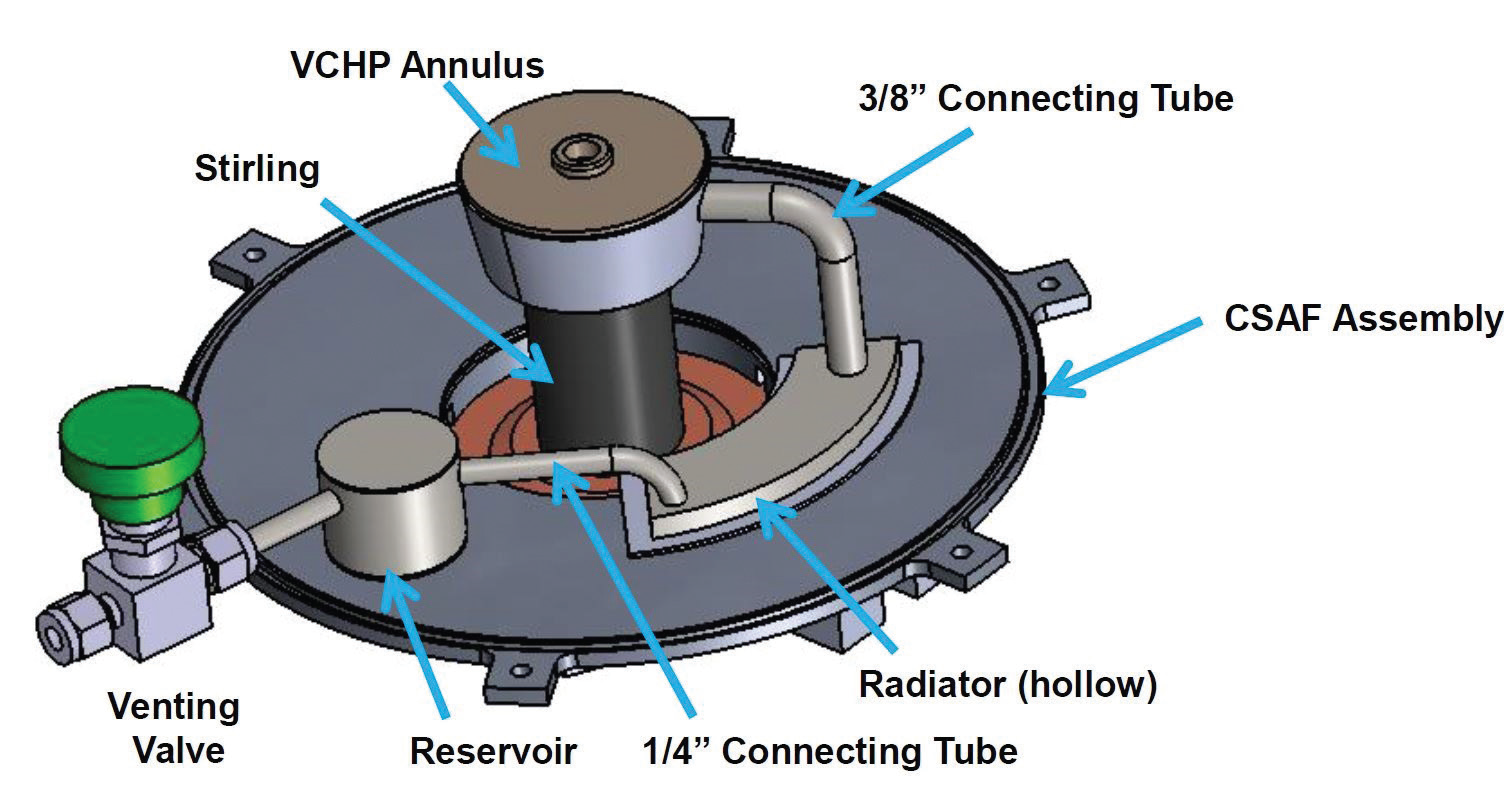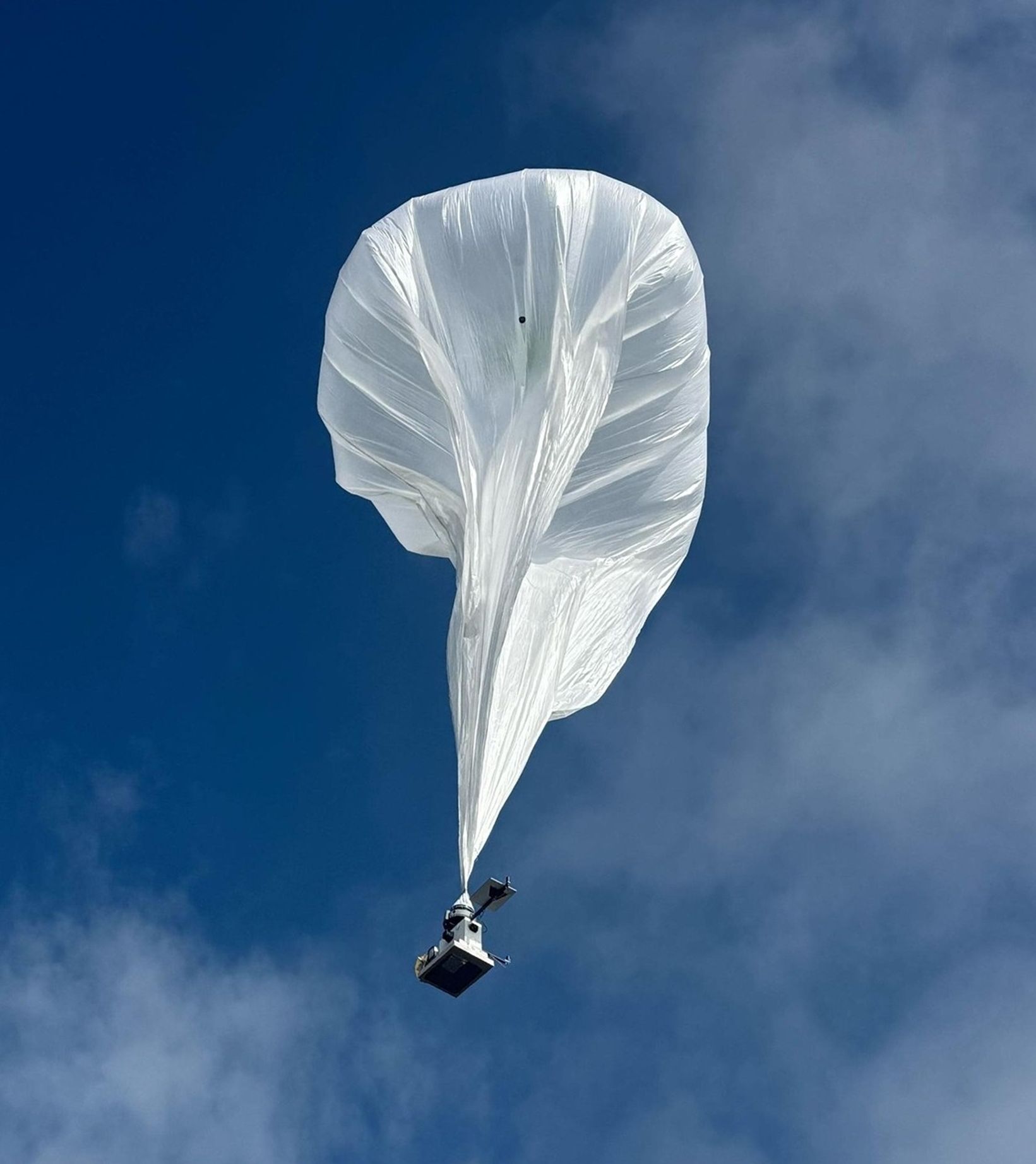Technology Development: NASA is sponsoring development of an alkali-metal Variable Conductance Heat Pipe (VCHP) to serve as a heat source backup cooling device for Stirling Radioisotope Power Systems (RPS). RPS are critical to planetary missions because they produce electricity and heat for long periods under the harsh conditions of deep space. In these systems, heat must be continuously removed from the plutonium-238 General Purpose Heat Source (GPHS) modules to maintain the modules and surrounding insulation at acceptable temperatures. Past Stirling RPS prevented damage to the GPHS during an extended loss of cooling by spoiling the insulation allowing the heat to escape—at the cost of early termination of the system. In a Stirling RPS, an operating Stirling convertor provides the necessary cooling as the GPHS heat is converted to electricity. However, there are mission scenarios where it might be desirable to stop Stirling convertor operation.
The VCHP is designed to passively activate with a small increase in temperature and redirect heat from the GPHS to a secondary heat rejection sink when the Stirling convertor is stopped. In April 2015, a prototype VCHP developed by Advanced Cooling Technologies, Inc. through a Small Business Innovation Research (SBIR) effort was successfully integrated with a Stirling convertor and tested at NASA’s Glenn Research Center (GRC). During this test, the prototype VCHP demonstrated its ability to passively maintain temperatures under constant thermal heat input after the Stirling convertor was stopped for 90 minutes (long enough to reach steady-state temperatures). Additionally, the VCHP reliably and repeatedly activated through three convertor start/stop cycles.
Impact: The VCHP enables the ability to repeatedly stop and restart Stirling convertor operation without risk of terminating the mission. This feature could be beneficial during installation of the GPHS modules into the Stirling system, and during spacecraft integration and launch operations. Also, this feature improves mission flexibility by enabling use of Stirling RPS for missions where scientific measurements require minimal electromagnetic interference and vibration, which is achieved by temporarily stopping convertor operation. The device could also allow the system to recover from a temporary Stirling convertor or electrical controller fault.
Status and Future Plans: The particular VCHP prototype tested at GRC in April 2015 would raise the mass of a Stirling RPS by ~0.4 kg and increase the thermal loss by ~5 W. Plans for future development may include use of improved materials for reduction of weight and thermal losses, demonstration of system level operation in vacuum, and demonstration under launch level vibration.
Sponsoring Organization: The Stirling VCHP backup cooling device was designed and fabricated under a Phase III SBIR contract with funding from the PSD’s Radioisotope Power Systems Program’s Stirling Cycle Technology Development Project. The PI for this project is Dr. Calin Tarau from Advanced Cooling Technologies, Inc. PSD is investigating Stirling RPS as a high-efficiency alternative to Radioisotope Thermoelectric Generators.
































